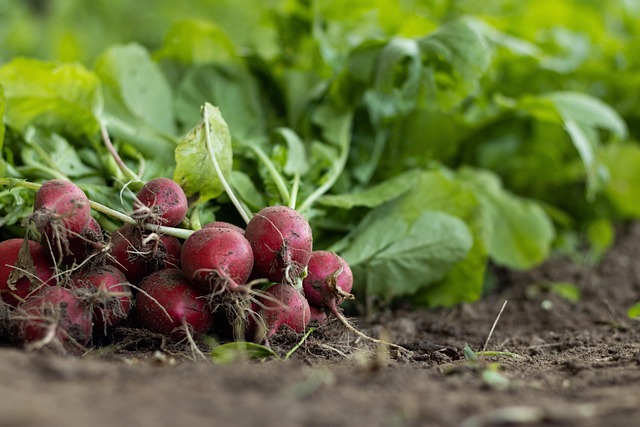Chemical-Free Farming: A Modern Agricultural Concept

In today’s rapidly evolving agricultural landscape, the debate between Chemical-Farming continues to shape farming practices worldwide. At Indochem Agrovet, we recognize the growing concern among cultivators and consumers alike about the long-term effects of farming methods on soil, crops, and overall health. Chemical-Free Farming and Organic Farming represent two fundamentally different approaches—each with its benefits and drawbacks—and understanding these can help farmers make informed decisions.
Chemical Farming relies heavily on synthetic fertilizers, pesticides, and herbicides to boost crop yield and manage pests quickly. This method has played a significant role in increasing food production globally. However, concerns about soil degradation, water pollution, and residue on produce have led many to reassess its sustainability. On the other hand, Chemical-Free Farming emphasizes natural inputs, crop rotation, composting, and biological pest control. This method nurtures soil health and promotes biodiversity while aligning more closely with eco-conscious farming ideals.
At Indochem Agrovet, we support a balanced approach that respects both innovation and nature. We work closely with farmers who practice both the farming help them navigate the practical challenges of each. Whether it’s selecting the right fertilizer or transitioning to more sustainable inputs, understanding these systems is key to success.
As consumer demand shifts toward cleaner and more environmentally friendly produce, the lines between Chemical Farming and Organic Farming are becoming more critical. The choice today influences not only the health of crops but also the future of agriculture.
Understanding Chemical Farming: A High-Input Approach
Chemical Farming emerged during the Green Revolution, offering a solution to food shortages through the use of synthetic fertilizers, pesticides, and genetically modified crops. Its main goal is to maximize yield within the shortest time frame. This method enhances plant growth rapidly by delivering nutrients directly to the soil in highly concentrated forms.
While Chemical Farming has significantly increased productivity, it often comes at the cost of long-term soil health. Continuous use of synthetic inputs can reduce microbial activity and organic matter, leading to compacted and less fertile soil. Over time, farmers may find themselves relying even more on chemicals to maintain the same level of productivity.
Additionally, excessive chemical use can result in groundwater contamination, pesticide resistance, and health concerns for both farm workers and consumers. Despite these drawbacks, Chemical Farming remains widely used due to its efficiency and scalability.
Exploring Chemical-Free Farming: A Natural and Sustainable Path
It is rooted in ecological balance and sustainability. Instead of relying on synthetic chemicals, organic practices focus on enriching soil with compost, green manure, and natural mineral sources. Pest control is achieved through natural predators, neem-based solutions, and crop rotation rather than synthetic sprays.
One of the greatest advantages of Organic Farming is its emphasis on soil health. By maintaining high levels of organic matter and biodiversity, the soil retains water better, supports more microbial life, and delivers nutrients efficiently to plants over time. This method is also gentler on the environment, reducing pollution and protecting ecosystems.
Though Organic Farming tends to yield slightly lower output in the short term compared to Chemical Farming, it often produces higher quality crops with better taste and nutritional value. The growing demand for organic produce has also led to a rise in organic certification and marketing opportunities for farmers.
Comparing Chemical Farming and Organic Farming: Key Differences
| Aspect | Chemical Farming | Organic Farming |
| Input Use | Synthetic fertilizers and pesticides | Natural compost, bio-fertilizers, and organic pesticides |
| Yield | Higher short-term yield | Lower but stable long-term yield |
| Soil Health | Can degrade soil quality over time | Improves and maintains soil fertility |
| Environmental Impact | Higher carbon footprint, pollution risks | Lower carbon footprint, eco-friendly |
| Cost | Lower initial labor but higher input cost | Higher labor but lower input cost over time |
Both Chemical Farming and Organic Farming have their place in modern agriculture. The choice often depends on the farmer’s goals, land condition, and market access.
Moving Toward Integrated Practices
Today, many farmers are adopting a hybrid approach—blending Chemical and Organic Farming techniques to create more resilient and productive systems. For example, using minimal synthetic inputs alongside organic compost can reduce dependency on chemicals while maintaining good yields. This method also makes it easier for conventional farmers to transition gradually toward organic practices.
At Indochem Agrovet, we encourage innovation in every field. Whether you’re using Chemical Farming, practicing Organic Farming, or exploring a mixed model, our team provides the support, inputs, and advice needed to build sustainable agricultural success.
Ready to Cultivate Smarter? Let Indochem Agrovet Guide You!
Whether you’re rooted in Chemical Farming, embracing Organic Farming, or exploring a blend of both, the right support makes all the difference. At Indochem Agrovet, we provide expert guidance, premium-quality inputs, and tailored solutions that empower farmers to grow better, safer, and more sustainably.
📞 Call us today at +91 98307 20311 / 83369 77770
🌐 Or visit: www.indochemagrovet.in
Let’s grow the future—together, naturally or conventionally!

